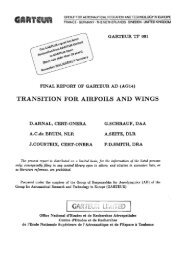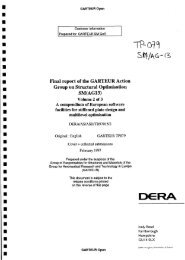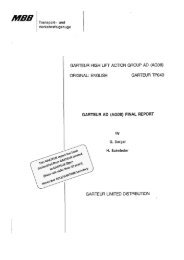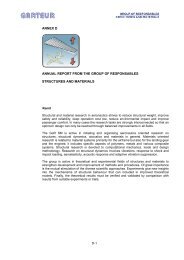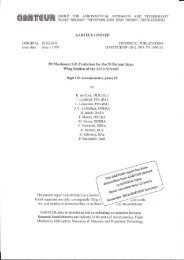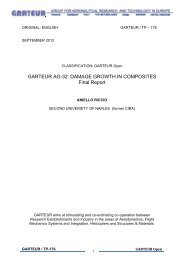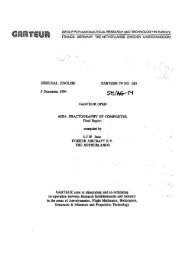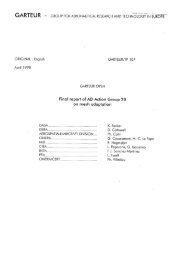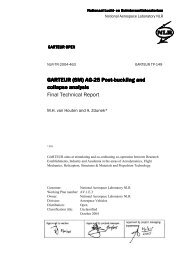Cadmium Substitution - garteur
Cadmium Substitution - garteur
Cadmium Substitution - garteur
You also want an ePaper? Increase the reach of your titles
YUMPU automatically turns print PDFs into web optimized ePapers that Google loves.
GARTEUR LIMITED<br />
ANNEX C<br />
Corrosion resistance<br />
C.1 Introduction<br />
Two aspects of the corrosion protection afforded by replacement metal coatings were<br />
investigated,<br />
• performance as a barrier coating<br />
• sacrificial properties of the coating<br />
The range of tests employed and the types of test specimen used are summarised in<br />
table C1.<br />
The accelerated tests and outdoor exposure trials conducted on undamaged panels<br />
were aimed at establishing the overall corrosion resistance of the coatings. The<br />
appearance of red rust was used as one of the criteria in comparing the performance of<br />
the various coatings. This was taken as an indication of the barrier properties of the<br />
coatings, although once the coating has corroded through to the substrate the sacrificial<br />
properties of the coating will be important. Scribed panels were used to semi-quantify the<br />
relative sacrificial properties of the coatings.<br />
Electrochemical measurements enable a more detailed understanding of the barrier and<br />
sacrificial properties of the coatings in saline environments to be established. The<br />
techniques employed allow the corrosion resistance of the coatings to be measured and<br />
the galvanic corrosion current and protection distances to be determined.<br />
C.2 Test procedures<br />
Details of the accelerated test procedures and outdoor exposure trials are given below<br />
together with the electrochemical techniques employed.<br />
C.2.1<br />
C.2.1.1<br />
Accelerated corrosion tests<br />
Exposure to 5% neutral salt fog<br />
Testing was carried out in accordance with ASTM B117 [C1]. Coated test panels were<br />
exposed to a continuous 5% neutral salt spray for up to six weeks in a cabinet<br />
maintained at a temperature of 35 o C. The panels were inspected at regular intervals for<br />
the first signs of red rust.<br />
C.2.1.2<br />
Exposure to intermittent acidified salt spray (MASTMAASIS)<br />
Coated test panels were assessed using an intermittent acidified salt spray test based on<br />
the procedure described by Lifka and Sprowls [C2] and covered by ASTM G85-84 [C3].<br />
The test was originally developed for evaluating the susceptibility of aerospace<br />
aluminium alloys to exfoliation corrosion but has found wider applications in the study of<br />
metal coatings.<br />
In the present work coated panels were exposed for periods of up to 3000hours to<br />
repeated 6 hour test cycles. Each test cycle consisted of a 45 minute spray with 5%<br />
acidified salt solution, a 2 hour direct air purge into the roof of the cabinet during which<br />
the relative humidity fell to between 40 and 45%, followed by a 3 hour 15 minute soak<br />
when the relative humidity rose to 90 to 95%. In tests conducted at DERA the acidity of<br />
GARTEUR SM/AG17 TP128 Page 57




